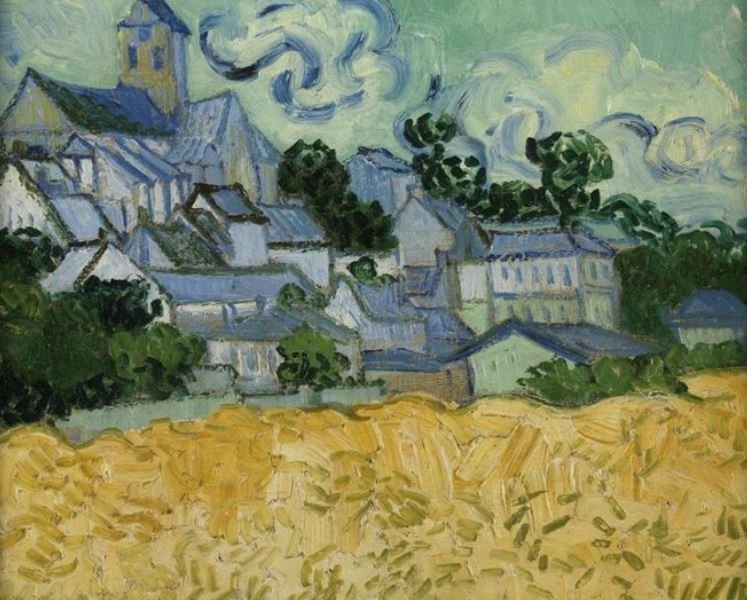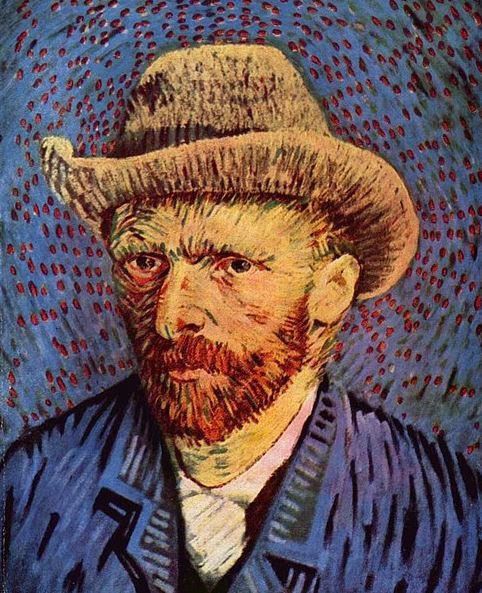The Mystery behind Vincent van Gogh’s Death
Vincent van Gogh, the Dutch post-impressionist painter, is renowned for his profound artistic contributions. While Van Gogh’s artistic brilliance is widely recognised, his death remains shrouded in mystery and controversy. On 29th July 1890, at the age of 37, Van Gogh died from a gunshot wound in Auvers-sur-Oise, France. However, the circumstances surrounding his death have raised numerous questions and conflicting accounts over the years.
In this article, I examine the various theories and perspectives, and seek to shed light on the circumstances that led to his untimely death.
I have also got articles showing where you can view Vincent van Gogh paintings in Europe, California, New York, Chicago, Washington D.C. and New England. For more articles about Vincent van Gogh, click here.
The Official Account: Suicide
The widely accepted narrative surrounding Vincent van Gogh’s death is that he died by suicide.
According to this account, Van Gogh, plagued by mental health issues throughout his life, suffered from severe mood swings and bouts of depression. In July 1890, after spending time in an asylum where he produced some of his most celebrated artworks, Van Gogh returned to the inn where he resided in Auvers-sur-Oise, France. On the evening of 29th July, he showed signs of distress, informing the innkeeper that he had attempted to take his own life. Van Gogh had shot himself in the chest with a revolver while in a nearby wheat field earlier that day. Despite surviving the initial attempt, he succumbed to his injuries two days later.
Wheat Field with Crows, July 1890 - Believed to be one of his last artworks before his death
Van Gogh’s mental health struggles are well-documented and have long been attributed as a significant factor in his artistic style and personal turmoil. Throughout his life, he battled with depression, anxiety, and episodes of psychosis. His emotional instability affected his relationships, and he often experienced feelings of isolation and despair. Van Gogh’s mental state is reflected in his letters and artwork, providing insight into the depth of his suffering.
Evidence supporting the suicide theory
Supporters of the suicide theory point to several pieces of evidence. Van Gogh’s own admission to the innkeeper about his suicide attempt, the presence of a self-inflicted gunshot wound near his heart, and the absence of any alternative explanation for his injuries are frequently cited as evidence of suicide.
In addition, the content of some of his final letters, characterised by a mix of optimism and despair, has been interpreted as indicative of someone contemplating suicide.
Inconsistencies in the official account
Despite the widespread acceptance of the suicide theory, there are lingering questions and inconsistencies that cast doubt on its validity, notably:
Some early accounts of the incident described Van Gogh as having “wounded himself” rather than explicitly mentioning suicide.
The whereabouts of the revolver used in the act, as well as the missing art supplies Van Gogh took with him that day, remain unknown.
The nature of the gunshot wound and the difficulty associated with a midsection self-inflicted injury raise doubts about the plausibility of suicide.
These discrepancies have led some researchers and authors to question the official account and propose alternative explanations for Van Gogh’s tragic death.
Alternative Theory 1: Accidental Shooting
Tree Roots and Trunks, July 1890
In their biography "Van Gogh: The Life," authors Steven Naifeh and Gregory White Smith put forth an alternative theory regarding Van Gogh’s death, suggesting that it was not a suicide but rather an accidental shooting. They propose that a 16-year-old schoolboy, possibly René Secrétan, may have been responsible for the incident.
Naifeh and Smith point to several pieces of evidence to support their theory, including:
The nature of the bullet wound, which was located in Van Gogh’s midsection rather than a typical location for a deliberate suicide attempt. The location of the bullet wound raises questions about the intentionality of Van Gogh’s act. It seems unlikely that someone attempting suicide would choose such an unconventional and less fatal method.
The absence of a suicide letter, contrasting it with a draft letter found in Van Gogh’s pocket on the day of the shooting, which was optimistic and not indicative of someone contemplating suicide. The absence of a suicide letter contradicts the traditional narrative and instead suggests that Van Gogh had intended to send a regular letter to his brother Theo.
The connection between Van Gogh and the Secrétan brothers, particularly René, who owned a pistol that Van Gogh may have taken.
While Naifeh and Smith’s theory offers an intriguing alternative perspective, it has faced criticism and scrutiny. Some argue that the authors’ interpretation of the evidence may be speculative or subjective. Critics also highlight the inconsistencies and changing accounts in the testimonies of those involved. Additionally, the theory’s reliance on a single draft letter as evidence is seen by some as insufficient to challenge the well-established suicide narrative.
Despite these criticisms, the accidental shooting theory brings attention to the complexities surrounding Van Gogh’s death and invites further exploration into the circumstances that may have led to the tragic incident.
Alternative Theory 2: Different Location
Wheat Field Under Clouded Sky, July 1890
Another alternative theory regarding Van Gogh’s death revolves around the account provided by a woman from an affluent family in Auvers. Breaking the code of silence that enveloped the community, she revealed that Van Gogh was not in the wheat field at the time of the fatal shooting.
According to this account, Van Gogh was actually on the road leading to the Secrétan’s villa when the fatal shot was fired. This contradicts the widely accepted narrative that places him in the wheat field where he had been painting.
If Van Gogh was indeed near the Secrétan’s villa, it raises questions about the involvement of the Secrétan brothers or other individuals in the events leading to his death. It suggests that the dynamics between Van Gogh and these individuals may have played a role in the tragedy.
The alternative location challenges the assumption that Van Gogh’s suicide was solely driven by his mental health struggles.
The reliability of this alternative account must be carefully evaluated, considering the time that has passed since the incident and the potential biases or motivations of the individuals involved. The fact that the woman broke the silence within the community suggests a willingness to challenge the established narrative.
The impact of this alternative theory lies in its potential to reshape our understanding of the circumstances surrounding Van Gogh’s death. If Van Gogh was not in the wheat field, it opens up possibilities for new interpretations and investigations into who else might have been present and what role they may have played.
Controversies and Unresolved Questions
View of Auvers with Church, July 1890
The death of Vincent van Gogh continues to be a subject of intense debate and controversy among scholars, historians, and art enthusiasts. Various theories and perspectives have emerged, challenging the widely accepted narratives surrounding his death.
As over 130 years have passed since Van Gogh’s tragic death, it is inherently difficult to find conclusive evidence that definitively explains the circumstances of his death. The passage of time and loss of documents pose significant challenges in piecing together the truth.
Conflicting testimonies and changing accounts from witnesses contribute to the complexity of understanding Van Gogh’s death. The unreliability of certain testimonies and the potential biases involved make it challenging to establish a definitive account of what truly transpired.
The controversies and unresolved questions surrounding Van Gogh’s death remind us of the limitations of historical investigations and the complexities involved in uncovering the truth. Despite the numerous theories and conflicting accounts, what remains indisputable is Van Gogh’s immense artistic achievements and the enduring impact of his work on the art world.
My Final Thoughts
Despite the extensive research and analysis conducted over the years, the exact cause of Van Gogh’s death remains a mystery. Regardless of the uncertainties surrounding his death, Vincent van Gogh’s immense talent, innovative artistic style, and the raw emotion conveyed through his paintings continue to resonate with audiences. Van Gogh’s battles with mental health, his relentless pursuit of artistic expression, and his unwavering commitment to his craft have become an integral part of his legacy.
In the end, the mystery surrounding Van Gogh’s death serves as a poignant reminder of the complexity of human existence and the limitations of historical inquiry.
I hope you have found this blog post useful. If you have any thoughts about Vincent van Gogh’s death, I’d love to hear them, please email me at sarahransomeart@gmail.com.










